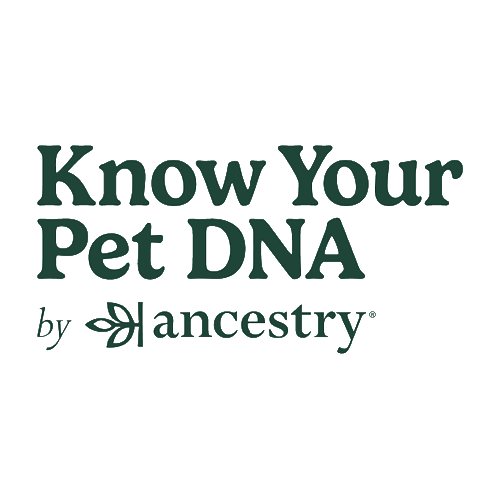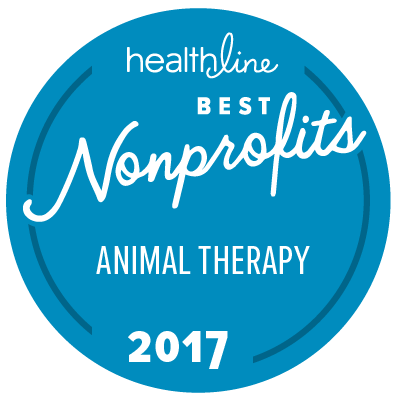How can pets add years to our lives? A range of factors are widely considered determinants of longer life and healthy aging in people, from regular physical activity to social connectedness and so much more. Scientific research, including HABRI-funded research, has demonstrated that the human-animal bond can positively influence the emotional, psychological, and physical health and wellbeing of people, in ways such as increasing physical activity, lowering blood pressure, and improving social connectedness. Many such benefits contribute to a longer, healthier life.
The following is a collection of research supporting the ways pet ownership contributes to longevity.
Physical Activity
Maintaining good physical health through regular exercise is a well-documented way to facilitate healthy aging. Moderate physical activity 2-3 times per week has been associated with a reduced risk of death by as much as 28 percent, according to longitudinal study of approximately 9,000 Swedish adults aged 60-96 years[1]. Research has shown that pet owners, particularly dog owners, are more likely to meet the recommended amount of physical activity through walking. One study that examined new dog owners after 12 months of ownership found that dog acquisition leads to an increase in hours spent walking per week. New owners tend to naturally take on the responsibility of dog walking as dogs can provide powerful behavioral incentives to increase recreational walking[2].
On average, dog owners walk one hour more per week compared to non-owners, according to a study that analyzed data from nearly 6,000 Michigan adults[3]. The same study showed that compared to non-owners, the odds of obtaining at least 150 minutes of walking per week were 34 percent higher for dog walkers, and the odds of doing any leisure time physical activity were 69 percent higher. Another study of over 11,000 adults over 40 years of age found that those living with a dog were most likely to be in the highest activity group and least likely to be in the no-activity group, when examining behavior across an 8.5-year period[4].
Physical activity related to dog ownership can also influence obesity levels in pet-owners. Research suggests that obesity, which is associated with an increased risk of disease and death[5], is less common in dog owners: according to a recent study, individuals who do not own a dog had a nearly 2-fold greater odds of being overweight, while those who did not walk their dog had 60 percent higher odds of being overweight compared to dog-walkers[6].
Cardiovascular Health
Cardiovascular disease (CVD) is the leading cause of death in the United States[7]. Research suggests that pet ownership can both facilitate healing following a cardiovascular event, such as a heart attack, and increase resiliency to such events from occurring in the first place.
A study of over 2,400 cat owners found that cat owners were significantly less at-risk of dying due to CVD, including stroke and heart attack, compared to non-owners during a 20-year follow-up[8]. The researchers theorized that this independent association between cat ownership and risk of cardiovascular fatality may be related to the buffering effect on stress that cats offer.
Similar stress buffering effects of pet ownership have also been found in dog owners[9] and pet owners[10] in general. A systematic review focused on the impact of pets on their owners found that the presence of pets can effectively reduce stress-related parameters[11], such as heart rate and blood pressure, among owners. Physiologically, human-animal interaction triggers the release of certain hormones such as dopamine and oxytocin, which play a key role in relaxation and bonding. This heightened relaxation as the result of activated oxytocin release in the presence of pets is what researchers suggest helps protect against stress related illness.
Pet ownership has also been shown to facilitate healing following a cardiovascular event. A study using health data from the Swedish National Patient Register found that the risk of death for dog-owning heart attack patients living alone after hospitalization was 33 percent lower compared to non-owners[12]. The risk of death after a stroke was 27 percent lower for dog owners compared to non-owners, according to the same study. The researchers also observed evidence of a lower risk of recurrent heart attacks in dog-owners amongst these study participants. Pet ownership has also been found to regulate cardiovascular activity, including heart rate, even during sleep. In a study of over 200 patients with a coronary artery disease, pet ownership was found to modulate heart activity in owners, leading to less imbalance in autonomic nervous activity. This study also found that these patients had a greater 1-year survival rate than non-owners[13].
Social Connectedness
More than one-third of Americans older than 65, and half of those over 85, live alone. Social isolation – the absence of social interactions, contacts and relationships – can be a significant threat to health, even comparable to smoking as many as 15 cigarettes per day[14]. Research strongly suggests that good social connections greatly improve longevity. According to a meta-analysis of 148 longitudinal studies involving more than 300,000 people, older adults with adequate social relationships have about a 50 percent greater likelihood of survival when compared with those who are isolated or have poor social relationships[15]. Researchers theorize that, in times of crisis, social connections help provide resiliency. Now more than ever, as the COVID-19 pandemic is impacting our ability to connect with others, people are turning to the human-animal bond for companionship and social support, and science shows that pets can help address loneliness and social isolation.
Several studies demonstrate that pet ownership is linked to increased socialization with others. For example, a study of almost 400 residents of Australian suburbs found pet ownership to be associated with increased social contact and interaction and increased perceptions in neighborhood friendliness compared to people who do not own pets[16], suggesting that pet ownership can serve as a conduit for getting to know people, and pets can be easy icebreakers to initiating new conversations. The same study found that over 40 percent of pet owners agreed that their pet had helped them get to know their neighbors, and over 80 percent of dog walkers said they talk to other pet owners while walking their dog.
While evidence suggests pets can increase social connectedness, a growing body of literature also demonstrates that pet ownership may attenuate loneliness. In one cross-sectional study of over 800 older adults living alone, pet owners were found to be 36 percent less likely to report loneliness than non-owners, and furthermore, non-owners had greater odds of being lonely[17]. According to a nationally representative survey of pet owners and non-owners commissioned by HABRI and Mars Petcare, 85 percent of respondents agree that interaction with pets can help reduce loneliness, with 80 percent of pet owners saying their pet makes them feel less lonely.
To help raise awareness of this science supporting pets for a longer, healthier life, HABRI created a new, sharable infographic, available for download here.
To stay informed on the latest from HABRI, including updates on the latest news relating to the Human-Animal Bond, recently published studies, and the publication of HABRI-funded research, please sign up for the HABRI Newsletter or follow us on Facebook, Twitter, Instagram or LinkedIn.
References
9.





